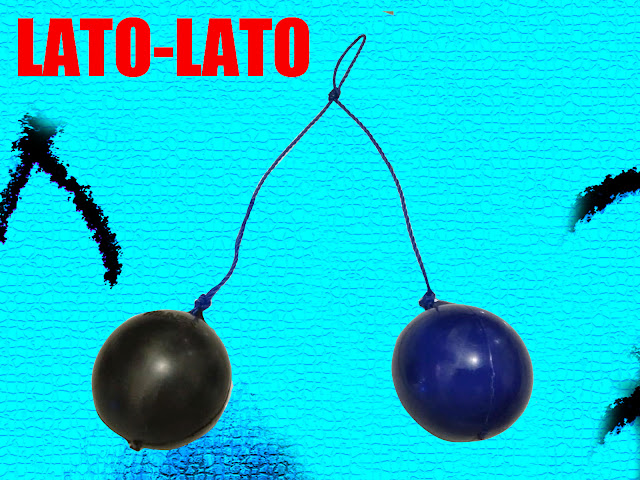The Postmodern Temptation: Godaan Zaman yang Mengaburkan Kebenaran
The Postmodern Temptation: Godaan Zaman yang Mengaburkan Kebenaran
Zaman pascamodern atau postmodernisme telah membawa berbagai perubahan dalam cara manusia memandang dunia, kebenaran, dan eksistensi. Di tengah perubahan itu muncul apa yang disebut sebagai "The Postmodern Temptation" — godaan untuk menolak kebenaran mutlak dan menerima segala hal sebagai relatif. Dalam artikel ini, kita akan membahas secara mendalam apa itu The Postmodern Temptation, dampaknya terhadap masyarakat, serta bagaimana menyikapi godaan ini di era digital dan serba instan.
Apa Itu The Postmodern Temptation?
The Postmodern Temptation adalah istilah yang merujuk pada kecenderungan manusia modern untuk terjebak dalam relativisme nilai, pemikiran subjektif, dan penolakan terhadap otoritas atau kebenaran tunggal. Dalam kerangka postmodern, tidak ada lagi "satu kebenaran", melainkan hanya interpretasi, persepsi, dan konstruksi sosial semata.
Godaan ini tidak datang secara eksplisit, melainkan halus, melalui media, budaya populer, pendidikan, bahkan spiritualitas. Postmodernisme menyusup perlahan-lahan ke dalam cara kita berpikir dan mengambil keputusan, hingga kita menganggap semua pendapat sebagai “sama benarnya.”
Ciri Khas Pemikiran Postmodern
Untuk memahami "The Postmodern Temptation", penting untuk mengetahui karakteristik utama pemikiran pascamodern:
- Relativisme: Tidak ada kebenaran universal, hanya pendapat dan perspektif.
- Subjektivisme: Nilai dan makna tergantung pada individu, bukan norma umum.
- Penolakan Narasi Besar: Sejarah, agama, dan sains tidak lagi dianggap sebagai fondasi objektif, melainkan hanya “cerita” yang dikonstruksi.
- Anti-Otoritas: Kecurigaan terhadap institusi, struktur kekuasaan, dan hierarki.
- Pluralisme ekstrem: Segala bentuk keberagaman dianggap sah, meski bertentangan secara logika atau etika.
Asal Mula dan Perkembangan
Postmodernisme lahir sebagai respons terhadap modernisme. Modernisme percaya pada kemajuan melalui sains, rasio, dan objektivitas. Namun, setelah Perang Dunia II, keyakinan itu mulai goyah. Kekecewaan terhadap otoritas, institusi, dan ideologi besar memunculkan pemikiran postmodern.
Tokoh-tokoh seperti Michel Foucault, Jacques Derrida, dan Jean-François Lyotard menjadi pelopor gerakan ini. Mereka mempertanyakan struktur kekuasaan, makna bahasa, dan keberadaan kebenaran universal.
Dampak The Postmodern Temptation di Masyarakat
Godaan postmodern memengaruhi hampir semua aspek kehidupan:
1. Pendidikan
Di banyak institusi, pendidikan bergeser dari mencari kebenaran ke sekadar mengembangkan pemikiran kritis tanpa fondasi moral yang kuat. Segala opini dianggap valid, tanpa perlu membuktikan kebenarannya.
2. Agama dan Spiritualitas
Postmodernisme membuat banyak orang enggan menerima ajaran mutlak dalam agama. Mereka lebih memilih bentuk spiritualitas personal, yang tidak terikat pada doktrin atau kitab suci.
3. Politik dan Hukum
Relativisme etika menyebabkan pergeseran dalam hukum dan kebijakan publik. Norma yang sebelumnya dianggap baku menjadi cair dan bisa dinegosiasikan sesuai tekanan opini publik.
4. Media dan Budaya Pop
Konten media saat ini banyak yang mengangkat narasi personal sebagai kebenaran, menonjolkan perasaan di atas fakta, dan mengaburkan batas antara opini dan informasi objektif.
Kenapa Postmodernisme Menjadi "Godaan"?
Godaan postmodern terasa menarik karena:
- Memberikan kebebasan penuh tanpa batas
- Membebaskan dari beban tanggung jawab moral
- Menawarkan kenyamanan subjektif: “Apa pun yang kamu yakini, itu benar untukmu”
- Menghapuskan konflik karena semua dianggap “sama sah”
Namun, di balik godaan itu terdapat bahaya besar: hilangnya arah, kekacauan nilai, dan ketiadaan standar yang jelas dalam hidup bermasyarakat.
Tantangan di Era Digital
Di zaman digital seperti sekarang, The Postmodern Temptation semakin kuat karena:
- Media sosial menciptakan ekosistem opini tanpa filter kebenaran.
- Algoritma membentuk “bubbles” informasi yang memperkuat keyakinan pribadi, bukan menantangnya.
- Deepfake dan hoaks menjadikan realitas sulit dibedakan dari ilusi.
- Konsumerisme informasi membuat orang memilih informasi yang nyaman, bukan yang benar.
Cara Menghadapi The Postmodern Temptation
Menghadapi godaan ini bukan berarti menolak semua bentuk berpikir kritis atau pluralitas. Justru kita diajak untuk:
- Kritis terhadap relativisme berlebihan – Tidak semua hal bisa dianggap sama benarnya.
- Kembali pada fondasi nilai dan kebenaran – Baik melalui logika, moral universal, atau keyakinan agama.
- Menumbuhkan integritas pribadi – Berani berkata benar walau berbeda arus.
- Mendidik generasi muda – Ajarkan pentingnya membedakan opini dan fakta, serta mempertanggungjawabkan pilihan hidup.
Keseimbangan antara Keterbukaan dan Kebenaran
Kita bisa bersikap terbuka tanpa menjadi relativis. Kita bisa menghargai perbedaan tanpa kehilangan pegangan nilai. Postmodernisme bisa menjadi alat refleksi yang baik jika kita tidak terjebak dalam ekstremnya.
Penutup: Kebenaran yang Tetap Dibutuhkan
Di tengah era postmodern yang penuh kebisingan informasi dan perbedaan nilai, kita perlu kembali mempertanyakan: Apakah semua benar? Atau justru kita sedang terjebak dalam godaan halus yang membuat kita menolak segala bentuk otoritas?
The Postmodern Temptation adalah tantangan zaman, tapi juga peluang untuk menyaring, memperkuat, dan memperdalam fondasi hidup kita. Jangan sampai godaan relativisme membuat ki



